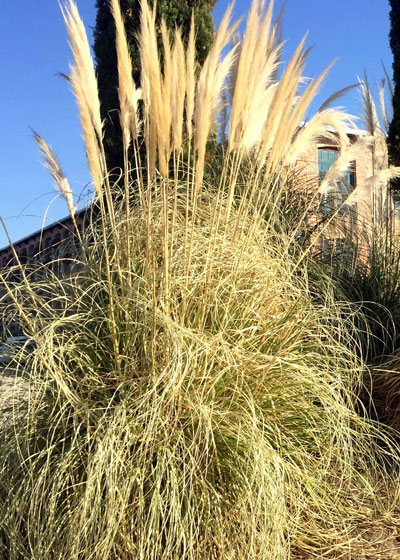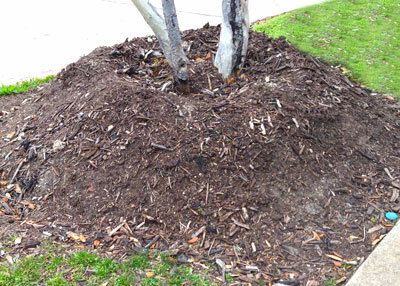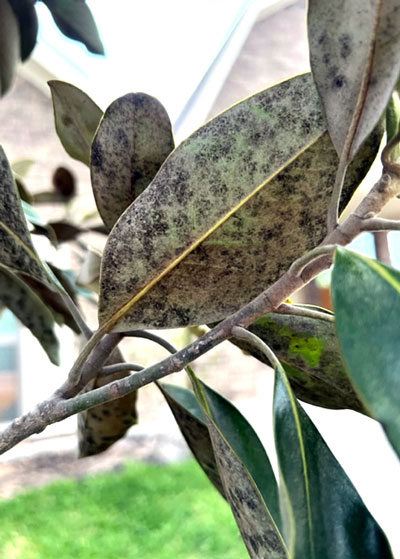Answers: May 5, 2022
Here are this week’s answers:
Question 1
POORLY PERFORMING PAMPASGRASS
Dear Neil: I have several 5- to 7-year-old pampasgrass plants. I prune each clump back to 18 to 24 inches each February. This year I have some plants that are 50 percent rotted. Why would that happen? Mike C., Grapevine.

Answer: Cold damage, either from the 2021 extreme cold or from the ice and cold of this past winter. Most pampasgrass that I saw around DFW in 2021 was badly hurt by the near- or below-zero temperatures of that February. Many people ended up taking it out and replanting it or replacing it with some other type of plant. For the record, pampasgrass is an evergreen grass. Where it is best adapted (warmer climates) it should not be pruned back each winter.
Return to list of this week’s questions.
Question 2
PALMETTO VS. RALEIGH
Dear Neil: I am ready to try something different to replace my Raleigh St. Augustine. The past two winters plus three years with gray leaf spot have taken a toll on my lawn. Is Palmetto a better alternative? Gary D., Southlake.
Answer: Your question was a great one, and I spent 30 minutes online trying to see what various southern universities had to say. Curiously, almost all of the posts I found were from huge sod producers touting their grasses as being “the best.” And, just when I thought the zoysias might be our solution, they started to crop up with gray leaf spot and take all root rot just like St. Augustine. So, go figure.
This was the most objective report I found. It’s from the University of Florida, a state where St. Augustine is the prime lawngrass. https://edis.ifas.ufl.edu/publication/lh010
I might offer one other thought. What you’re assuming to be winter damage could have been take all root rot in the spring. It and gray leaf spot can both be addressed with Azoxystrobin fungicide, sold as Scotts Disease-EX.
How would it be to try Palmetto in a part of your yard this year and make a concerted effort with the fungicide in the rest of the yard for 2022? Or just work with the fungicide one more year to be sure before you go to the expense and trouble of the changeover.
Return to list of this week’s questions.
Question 3
WHY DO THEY PLANT TREES ABOVE GRADE?
Dear Neil: I have always been taught to plant at the same depth at which a plant had been growing originally, but when I see commercial landscapes, I often see that the plants are several inches above the surrounding grade. Why would they be doing that? Tom, Northlake.

Answer: I don’t recommend that at all. In some cases I think it’s because they need to get rid of the soil they have just dug out of the holes and they don’t want to carry it off-site. In other cases it may be to keep the plants from settling and being too low in the ground. It’s actually more damaging for a plant to sink below its original elevation than to be above it. But it makes it so difficult to water the plant. In wetter areas of Southeast Texas, and when planting in low spots elsewhere, this can be referred to as “planting high.” It’s a means of keeping roots out of waterlogged soil. But my preference is still to plant at the original grade.
Return to list of this week’s questions.
Question 4
DEER-PROOF PLANTS
Dear Neil: We retired to Northeast Texas. We have a great deal of shade. And deer! What can you recommend that deer won’t eat? Angie N., North of Tyler.
Answer: I haven’t lived with deer first-hand (although they are making their way into our Collin County rural landscape). What I know is what I have read and observed as I have traveled. I know they eat virtually everything.
I do know that my friend Dr. Jerry Parsons, Professor Emeritus from Texas AgriLife Extension of TAMU, works closely with Forrest Appleton. Jerry has this information from Forrest in his Plant Answers website, and A&M also has it in a publication. It’s the best list that I have seen. I’m going to let you work through it for those plants that will work in your environment, but it’s a great starting point.
Return to list of this week’s questions.
Question 5
WHEN SHOULD CALADIUMS BE PLANTED IN DFW?
Dear Neil: When should caladiums be planted in the Dallas area? They were sent to me way too early. M.S., Dallas.
Answer: I watched with great interest 25 or 30 years ago as my good friend Bob Brackman did trials on dozens of caladium varieties at the Dallas Arboretum. He was testing for tolerance to sun, but he was also keeping track of the number of days they were at prime color. Curiously, he found that you get just about the same number of weeks of prime color regardless of whether you plant them in mid-May or early June. But if you rush the season by planting too soon or when soils are wet you risk losing the tubers entirely. My vote is no sooner than mid-May, but it’s ok to wait until late May.
Return to list of this week’s questions.
Question 6
BERMUDA IS BEING OVERRUN WITH WEEDS
Dear Neil: My bermudagrass in my backyard has been overrun with weeds. I was thinking of planting St. Augustine from plugs. Will it crowd out the weeds? C.B., Forney.
Answer: St. Augustine should crowd out all weeds except dallisgrass and nutsedge (“nutgrass”). However, your bermudagrass should have crowded out many of them as well. Are you mowing low (1-1/4 to 1-1/2 inches)? That will keep the bermuda low and spreading. Is the area in full sun? If there’s a lot of shade that will weaken the bermuda (and could even weaken St. Augustine) and give weeds a chance to take over. Are you mowing frequently (5- to 7-day intervals) during late spring and summer. Infrequent mowing weakens the grass. You need to make sure of those facts before you buy and try the plugs.
Return to list of this week’s questions.
Question 7
MORE WEEDS! IN A FLAGSTONE WALK
Dear Neil: What is the best way to keep weeds from growing through gravel in a flagstone walk? I’ve tried Roundup and hand-pulling, but I need a better way. K.R., Plano.
Answer: I have a Pavestone driveway. I use the original Roundup, a glyphosate-only herbicide (no other active ingredient). It kills the grasses and almost all other weeds without contaminating the soil between my pavers. I’ve been using it for 35 years, mostly to kill annual bluegrass and annual rye that come up late each winter. It works great.
Return to list of this week’s questions.
Question 8
BEST ANNUALS FOR LATE AFTERNOON SUN
Dear Neil: I have a tough spot in my yard. It faces west. It’s in the shade until 4 p.m., then it gets sun the rest of the day. What would be good flowering annuals or perennials for containers in that space? R.D., no city given, but doesn’t this really apply to just about any Texas city!
Answer: I always start with annuals, since they bloom for months, not just for a couple of weeks like perennials. Bronze-leafed wax begonias might make it if they weren’t backed up against a light-colored wall. Angelonias, pentas, fanflowers, firebush, sun-tolerant coleus (if you had large containers), lemon lollipop, purple fountaingrass and mandevilla all come to my mind, but so much of it depends on the pot size and whether you need upright, sprawling or climbing plants. Let a Texas Certified Nursery Professional help you.
Return to list of this week’s questions.
Question 9
BUR OAKS HAVE SUDDENLY GONE DOWNHILL
Dear Neil: I have two bur oaks. They looked terrific for 16-17 years, then something happened. This is how they look this year. I fertilize them and water them. What gives? J., Colleyville.

Answer: You need to have a certified arborist look at the trees closely to figure out what might have killed them. Do so soon. This tree is likely to fall at any time and could do serious damage to your house or, worse yet, cause injury. I can’t see enough of the tree to tell for sure, but things I would look for would include any changes in the soil grade, perhaps due to recent construction or landscaping, damage to their trunks or application of a weed-and-feed weedkiller, particularly one containing atrazine. Bur oaks in general were not hurt by the cold of February 2021. They are winter-hardy clear to the Canadian border and beyond, but I guess that’s also a possibility if the trouble started after that. The arborist will be able to sort through the facts and throw out the fantasies. (My advertiser here in e-gardens, Arborilogical Services, has 12 or more International Society of Arboriculture Certified Arborists.) If you have an arborist you like already, use their services. If you do not, these folks are great.
Return to list of this week’s questions.
Question 10
DOES ASIAN JASMINE HURT A TREE IF IT CLIMBS THE TRUNK?
Dear Neil: Should I discourage Asian jasmine from climbing up the trunks of my pecan trees? C., McKinney.
Answer: It’s a matter of personal taste. I’m not a big fan of Asian jasmine as a climbing vine on tree trunks. I have Persian ivy climbing a few of my pecan trunks. It looks like a large-leafed variant of English ivy, and I rather like the look it gives, but Asian jasmine, to my eye, looks shaggy. But I don’t get a vote. It won’t hurt the trees. I would, however, keep it maintained to a set height that you can manage, say 4 or 5 feet. If you decide to keep it off the trunks, use a line trimmer, but don’t let the line cut into the bark of the trees’ trunks.
Return to list of this week’s questions.
Question 11
WHAT IS DULL BLACK GROWTH ON MY MAGNOLIA?
Dear Neil: My Little Gem magnolia tree bloomed beautifully last year and it has buds all over it now. But it also has this black film all over the backs of the leaves. What can I do? C.H., Manvel.

Answer: This is sooty mold, the same as I describe on crape myrtle leaves and stems in the story this issue. It is not going to hurt your tree. In fact, these are last year’s leaves that will soon be shed as new growth is produced. You are in a part of Texas where high humidity favors this fungus. However, no spray is merited. Just sit tight and enjoy the blooms. It will soon look better as the new growth comes out.
Return to list of this week’s questions.
Question 12
WHY DO OUR CRAPE MYRTLES BLOOM LATE AND BLOOM POORLY?
Dear Neil: Every year our neighborhood’s crape myrtles look great. Except ours. By the end of the summer we will get a few red blooms on the 20-foot-tall plants along our driveway. Should we cut them back to the ground? N.H., Near East Fort Worth.
Answer: Cutting crape myrtles back to the ground is generally reserved only for plants that have suffered freeze damage or that have been butchered by being topped.
You need to determine why they are not blooming. I know that’s the main reason for your posting your question, so let me list a few of the possible causes,
• Crape myrtles need full sun to bloom to their best potential. Any shade begins to compromise that performance.
• Crape myrtles bloom on new growth, so you’ll want to feed them with a high-nitrogen fertilizer.
• Hopefully they were not hurt by the extreme cold of February 2021. It doesn’t sound like that was the cause of the problem, since you said “every year,” and not just “last year.”
• Some varieties bloom later than others. My favorite red is one called Country Red. It’s probably the last one to bloom each year, not coming into flower until late July or even August. And, as if that’s not bad enough, it’s also very easily killed to the ground by cold so I no longer recommend it at all. Tuscarora is another rosy-red variety that is commonly planted, and it was hurt badly by recent winters.
Somewhere in all of that is probably a solution to your question. I wish I’d had a photo to look at.
Return to list of this week’s questions.
